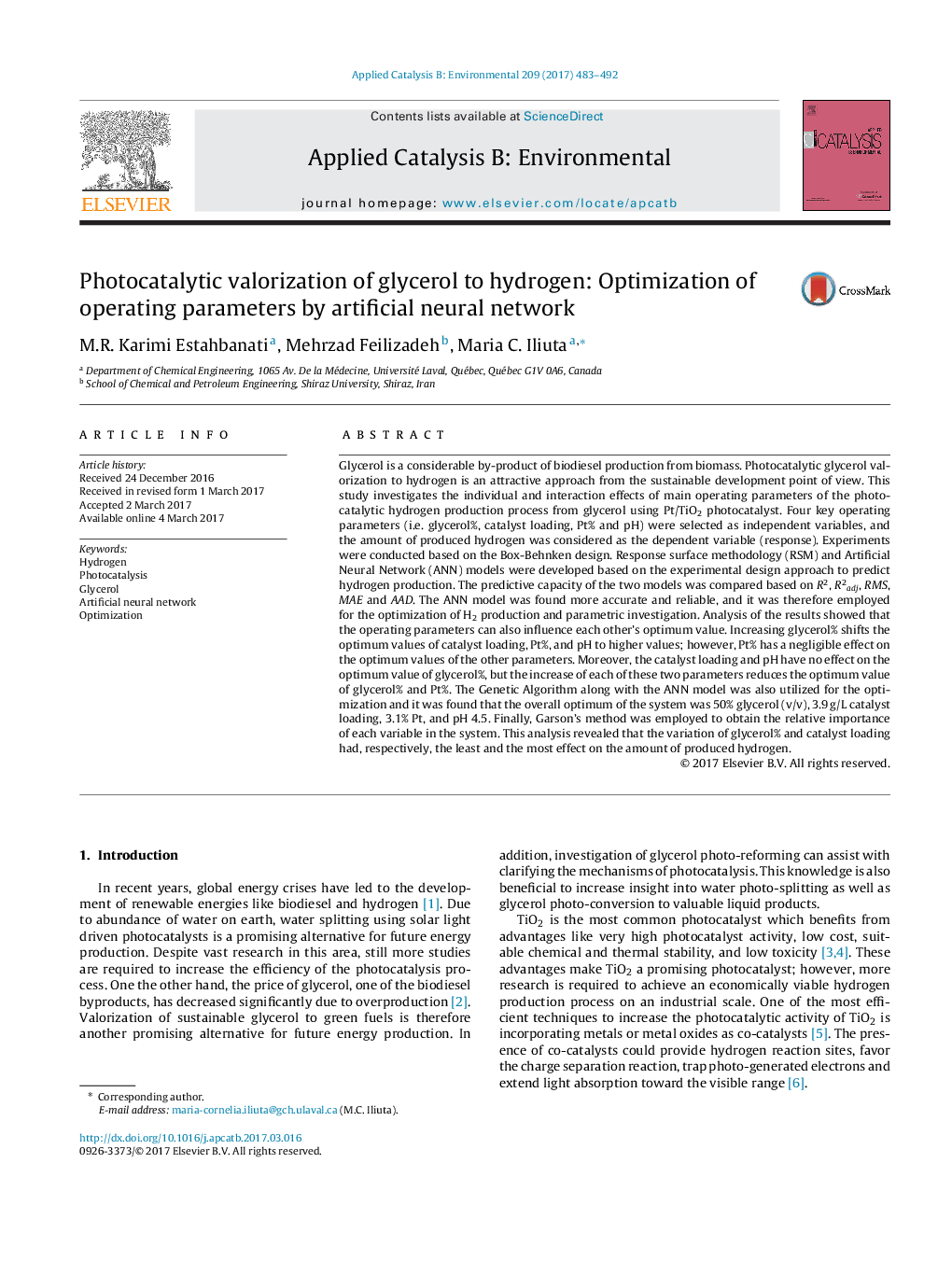| کد مقاله | کد نشریه | سال انتشار | مقاله انگلیسی | نسخه تمام متن |
|---|---|---|---|---|
| 6454212 | 1418811 | 2017 | 10 صفحه PDF | دانلود رایگان |
- Response surface methodology and Artificial Neural Network models were developed.
- Artificial Neural Network model was found to be more accurate and reliable.
- The optimum values of operating conditions were determined by Genetic Algorithm.
- The operating parameters can also influence each other's optimum amounts.
- Catalyst loading and glycerol% had the most and the least effect, respectively.
Glycerol is a considerable by-product of biodiesel production from biomass. Photocatalytic glycerol valorization to hydrogen is an attractive approach from the sustainable development point of view. This study investigates the individual and interaction effects of main operating parameters of the photocatalytic hydrogen production process from glycerol using Pt/TiO2 photocatalyst. Four key operating parameters (i.e. glycerol%, catalyst loading, Pt% and pH) were selected as independent variables, and the amount of produced hydrogen was considered as the dependent variable (response). Experiments were conducted based on the Box-Behnken design. Response surface methodology (RSM) and Artificial Neural Network (ANN) models were developed based on the experimental design approach to predict hydrogen production. The predictive capacity of the two models was compared based on R2, R2adj, RMS, MAE and AAD. The ANN model was found more accurate and reliable, and it was therefore employed for the optimization of H2 production and parametric investigation. Analysis of the results showed that the operating parameters can also influence each other's optimum value. Increasing glycerol% shifts the optimum values of catalyst loading, Pt%, and pH to higher values; however, Pt% has a negligible effect on the optimum values of the other parameters. Moreover, the catalyst loading and pH have no effect on the optimum value of glycerol%, but the increase of each of these two parameters reduces the optimum value of glycerol% and Pt%. The Genetic Algorithm along with the ANN model was also utilized for the optimization and it was found that the overall optimum of the system was 50% glycerol (v/v), 3.9Â g/L catalyst loading, 3.1% Pt, and pH 4.5. Finally, Garson's method was employed to obtain the relative importance of each variable in the system. This analysis revealed that the variation of glycerol% and catalyst loading had, respectively, the least and the most effect on the amount of produced hydrogen.
108
Journal: Applied Catalysis B: Environmental - Volume 209, 15 July 2017, Pages 483-492
